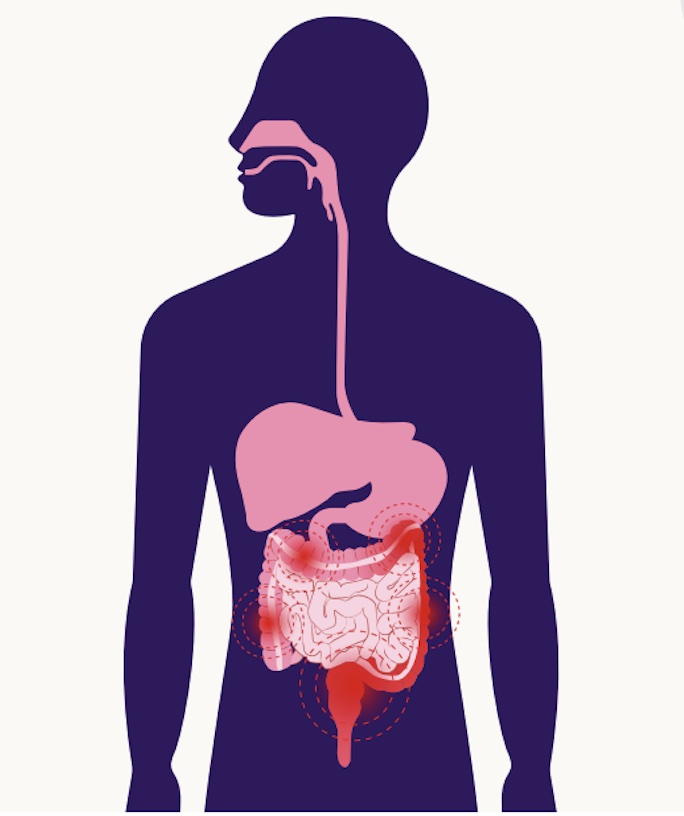About Ulcerative Colitis
Key points
- Ulcerative colitis is one of the two major types of inflammatory bowel disease (IBD), the other being Crohn’s disease.
- Ulcerative colitis affects the inner surface lining (epithelium) of the large intestine (colon and rectum).
- Ulcerative colitis is a lifelong condition where disease symptoms may sometimes be present (flare up) while at other times there may be none at all (remission).
- Ulcerative colitis has little effect on life expectancy and most people with ulcerative colitis go on to lead happy and fulfilling lives.
What is ulcerative colitis?

Ulcerative colitis is a type of inflammatory bowel disease (IBD) that can cause inflammation and ulceration in the large intestine (colon and rectum). Inflammation can cause redness, swelling and pain, and is the body’s response to injury or irritation. Ulcers (sores) also develop on the surface of the intestines inner lining which may bleed and produce mucus.
What does living with ulcerative colitis mean for me?
Ulcerative colitis is a chronic condition which means that it is for life. There may be times when you have little to no symptoms (remission) and times when symptoms are more active (flare-ups). Some people will have few flare-ups while others may have a more severe case of ulcerative colitis or ongoing symptoms.
What is the cause of ulcerative colitis?
The cause of ulcerative colitis is unknown but it seems to be related to genetics and how the environment affects the immune system. Ulcerative colitis is not infectious.
There also appears to be a change in the gut bacteria of people with ulcerative colitis but it still isn’t clear if the change is caused by inflammation.
Certain genes make people more likely to develop ulcerative colitis and can be triggered or activated by something in the environment. Research is ongoing to discover which environmental conditions are risk factors for developing the disease. As an example, ulcerative colitis is more common in non-smokers or ex-smokers but the reason for this is not known.
People who have one or both parents with ulcerative colitis (or Crohn’s disease) are more likely to develop the IBD. You can learn more about inheriting or passing on ulcerative colitis at Fertility, Pregnancy and IBD.
Is there a cure for ulcerative colitis?
There is currently no cure for ulcerative colitis, but it can be treated and managed with medication and/or surgery.
Lifestyle factors such as diet and exercise can also help to reduce disease activity. Ulcerative colitis has little effect on life expectancy and most people with ulcerative colitis go on to lead happy and fulfilling lives.
As you learn to manage the disease you will be able to travel around the world, form healthy relationships, eat out, exercise and have a career you enjoy. Ulcerative colitis doesn’t mean you have to stop doing the things you love.
Click here to learn how exercise and diet can affect your ulcerative colitis.